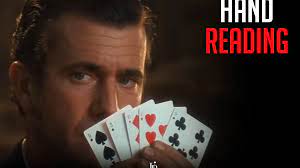Learning poker takes a bit of time, and you can’t expect to understand every aspect of the game in a day. There are however a few fundamental things that you can learn, which will help you to develop a strategy. One of the aspects of poker you should master is the hand you are holding. You need to know what hand beats what other hand, so that you can play safely.
All poker hands are five card hands, except the following: the royal flush, the straight flush, the four of a kind, the full house, the flush, the straight, three of a kind, two pair, and one pair. The highest ranked of these hands is the royal flush, the second highest is the straight flush, and so on. Some people say that six-card-stud-low is the best poker hand. This means that the lowest hand you could have is (6, 6, 6, 5, 5, 4, 3, 2) and the highest hand is the royal flush, (10, 10, 10, jack, queen, king, ace, (18, 19, 20, pair, two pair, and one pair)).
In poker, you need to remember what hand beats what other hand. If you have a pair, you can scare people into thinking that you have more of a chance of getting another pair, when in fact you only have one pair. You can have a trio, (three of the same number or face, for example three 5s), or a twosome (two of the same number or face, for example two 5s, two 10s).
Numbers and face cards are the basic combinations that people suggest you should never do in poker, as they are called the door card. If you have more than two cards of the same face or number, you are actually stuck, and can only choose from the lower level cards. People rarely raise or throw away two cards when they have a door card, and people will usually lay down a three, four or nine to get a free card. However, people can get lucky and hit the wrong card, giving it free cards, which they might not have before.
If you have more than two cards of the same face or number, you can consider these to be a favorite hand. If you have an ace, that is, ace, ace, ace, 2, 3, 4, 5, you have a hard eight and people often suggest you don’t have much of a chance of making a hand of gold. However, if you have an ace, you can certainly have a chance of making a hand of gold, but a very good one, if you have the right bridge.
People often say, “I want to get a diamond! What do I do?” They mean that they are hoping the flop or card they are looking for will brighten up their chances, but really they just mean they want a card. If you want a card, you can hope for one, but there is no guarantee.
The flop is when the cards are dealt in the middle of the table and placed in the center of the table, face up. Next comes the turn, which is when the dealer turns up the card or cards that will complete the lie. This is followed by the river, when the dealer places a final card face up alongside the other cards. This is the full hand. The player should remember these names, and they are indicative of the rank of the cards, just as in poker, though the ranks are not used throughout the article.
First, two cards are generally assigned to each player. That is the low card, or the card under the gun (the first person dealt), and the high card. Typically, some sort of trick is played with these cards. Sometimes, it is a straight; more often, it is a flush. Either way, these cards should be played toward the middle of the table, to help differentiate each hand.
A hand begins with the person with the highest card, although this is not necessarily the strongest card. Often, players will use an ace, sometimes a queen to better their hand. If two strong cards are assigned to one player, other players will be more reluctant to cross the divide. Two cards are then dealt to each player.
Now comes the main shake of the card deck, either to start the betting or to continue. If the first round of betting is successful, this is when you should know when to bet or when to fold. Betting is typically done in “Dewavegas” calls, where the player to the left of the dealer just throws the money in the middle. This is done to protect himself/herself from the possibility of counting. On the second hand, the high card usually wins the game. When the first flush, the cards are compared.
